My daughter drives a 2023 Toyota RAV4 Hybrid Woodland Edition that I appreciate more each time I get in it. Except for the detritus of the teen driver and the stink of sports gear. It’s a great, safe, never-fast car with a relatively low cost of ownership.
The refreshed 2025 Hyundai Tucson Hybrid might be even better. In a week running errands around town and capping a 600-mile weekend road trip, the top Limited model proved itself a compelling rival to the bestselling non-truck on the market.
Refreshed for the first time since it launched new for 2022, the Tucson Hybrid sports new ends between the origami folds of its sheetmetal, but it has the same roomy footprint. The interior moves upscale with clean but simple digital interfaces and a cabin optimized for space like an electric vehicle, and Hyundai squeezed a bit more juice out of the battery pack.
Here are some of the noteworthy changes and some reasons why the Tucson Hybrid should be on the shortlist for your compact crossover quest.
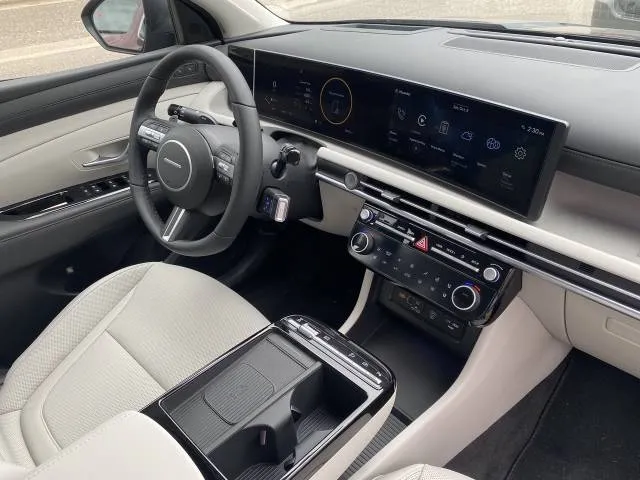
2025 Hyundai Tucson Hybrid
Pros: Tucson Hybrid re-introduces a smart interior
The biggest changes for the 2025 Hyundai Tucson arrive inside. On top trims, the gear selector has been moved from the console to the steering column, allowing for a tiered cargo shelf similar to the Ioniq 5 and Ioniq 6 electric cars. A digital climate interface with haptic feedback keeps the dash clean without being unnecessarily complex. Further, the newly standard 12.3-inch touchscreen is curved toward the driver in the same glass panel as the 12.3-inch digital instrument cluster, and it doesn’t overcomplicate things. The climate controls are easy to use, especially with the return of climate dials, and in all it’s a great compromise between analog simplicity and digital customization.
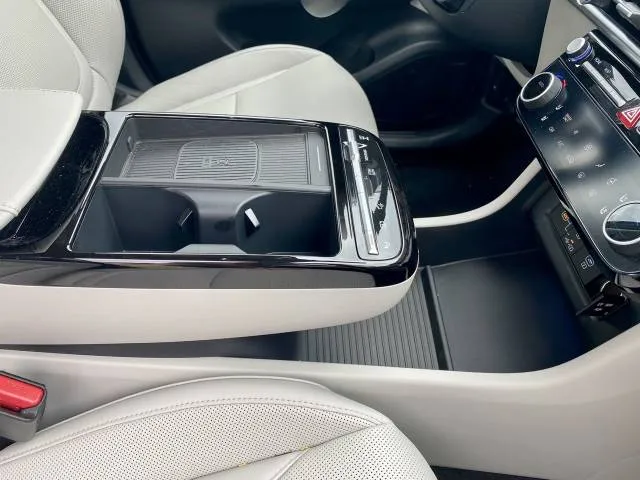
2025 Hyundai Tucson Hybrid
The new console design also allows for a wireless phone charger that fits a whole lot better now that wireless smartphone connectivity is standard. A shelf in the dash on the passenger side adds easy access to the essentials for the modern road trip, such as a phone, earbud case, granola bar trash, and even a teen anachronism in the form of a paperback.
My tester had a “gray” interior but that undersells it. The heated and ventilated seats, as well as the wool-color dash and door materials were soft in all the right places and firm and supportive otherwise. Compared to the RAV4, the Tucson Hybrid Limited could be mistaken for a luxury car.
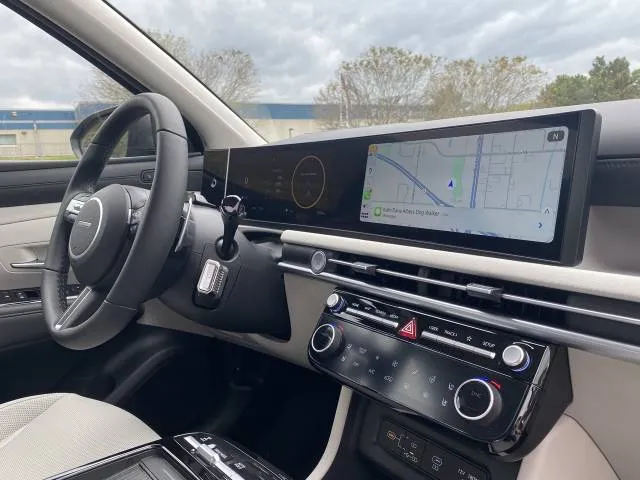
2025 Hyundai Tucson Hybrid
Pro: Tucson Hybrid’s quiet refinement
The top Limited trim I tested had acoustic laminated front glass to insulate the cabin from road and wind noise. It’s much quieter than the RAV4 Hybrid. Hyundai adds a Baby Mode buried in the touchscreen that uses the motor to dampen initial acceleration and smooths shifts even more to limit abruptness on the throttle. Hyundai says it can affect vehicle pitch before and after bumps or potholes by using the driver-assist hardware in conjunction with the motor. I used it once but noticed only the mushy throttle response.
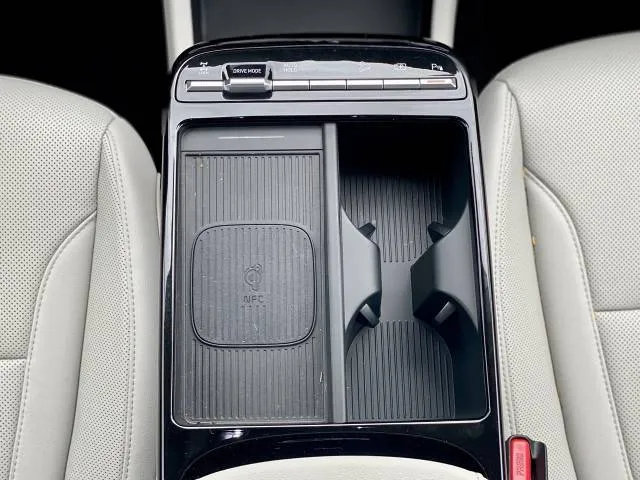
2025 Hyundai Tucson Hybrid
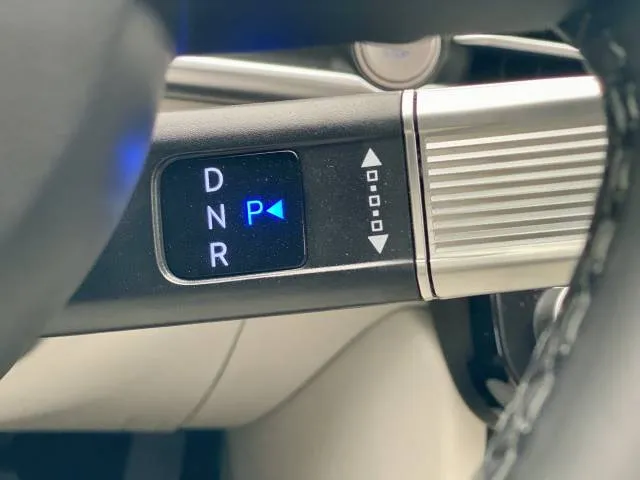
2025 Hyundai Tucson Hybrid
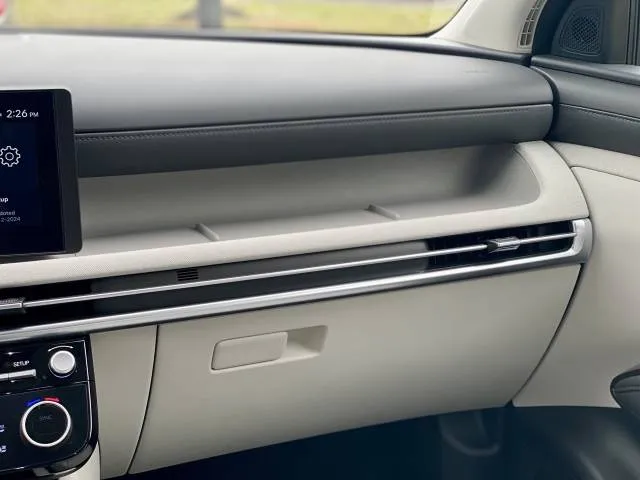
2025 Hyundai Tucson Hybrid
Pro and Con: Tucson Hybrid gets good mpg, for a Tucson
Hyundai calls its base hybrid models Blue, and they’re usually stripped down affairs rolling on small but more efficient wheels. The Tucson Blue gets 38 mpg, but the Limited I tested has an EPA rating of 35 mpg combined. In my mostly highway testing at 75 mph, I got 31 mpg, but around town it exceeded the 35 mpg rating in most instances. That’s above average for an all-wheel-drive crossover, with the non-hybrid model rated at 26 mpg combined. The Tucson Hybrid comes up shy of the segment-leading Toyota RAV4 Hybrid, with AWD that’s rated at 39 mpg combined.
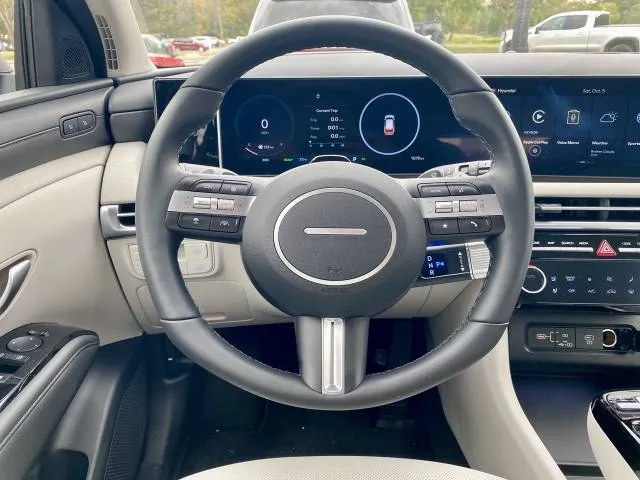
2025 Hyundai Tucson Hybrid
Pro: Hyundai hybrids’ dual-mode paddle shifters
I used the regenerative braking paddles much more often. In Green or Normal modes, the steering-wheel-mounted paddles can be left alone to let the Tucson coast as in a normal gas car, or the driver can adjust the regenerative braking at three levels to recoup energy back to the 1.5-kwh lithium-ion battery. Used right, it can lead to more electric driving more often.
On the other hand, in Sport mode, the paddles turn into shifters for the 6-speed automatic transmission. It lets the driver dig deeper into the revs on the 1.6-liter direct-injected inline-4. When pressed, it’s the only time the engine gets loud, and the 47.7-kw (64-hp) electric motor—up slightly from last year’s 44.2 kw (59 hp)—smooths out shifts with its torque. In total, the Tucson Hybrid now makes 231 hp (up 5 hp from last year) and 258 lb-ft of torque. It’s quick and responsive, for a comfy compact crossover.
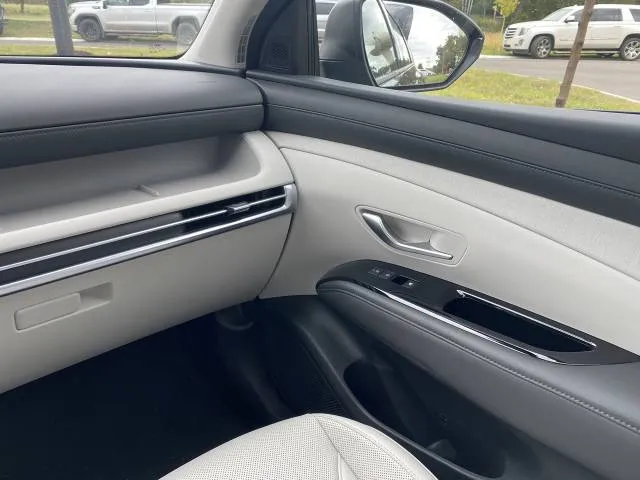
2025 Hyundai Tucson Hybrid
Con? Getting used to the Tucson’s 6-speed automatic
Having a multi-gear transmission with a car running in electric mode can be an adjustment—or change of expectations. Unlike the Toyota RAV4 and its two motors (three motors with AWD) and planetary gearset, which works like a more complex continuously variable transmission, the Tucson Hybrid uses a single motor sandwiched between the engine and the 6-speed automatic transmission. The Toyota system is designed more for efficiency, whereas the Tucson is more for power (the RAV4 makes 219 hp and 221 lb-ft). The Tucson feels more conventional with its 6-speed automatic, but it can shift in electric mode, which can be unfamiliar to hybrid drivers used to Toyota’s system.

2025 Hyundai Tucson Hybrid
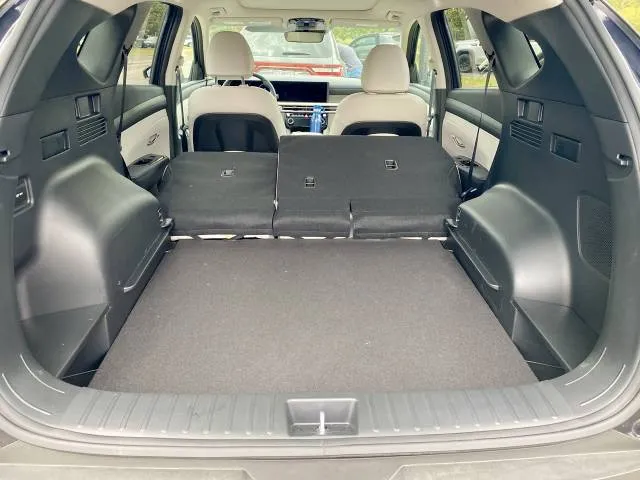
2025 Hyundai Tucson Hybrid
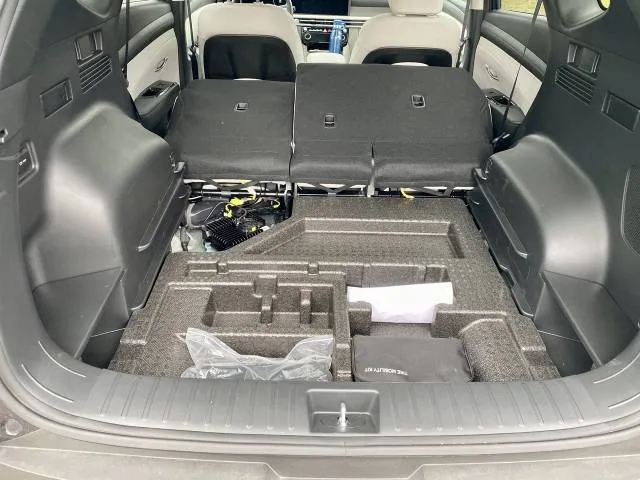
2025 Hyundai Tucson Hybrid
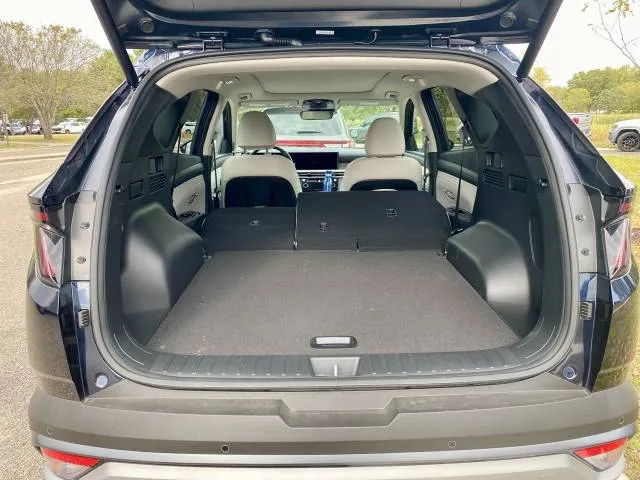
2025 Hyundai Tucson Hybrid
Pro: Tucson can fit a family
Space is at a premium in compact crossovers. It’s a big step in size (and high-school parking lot hazards) to a midsize or three-row crossover SUV. I’ve come to accept that Honda, Volkswagen, and Chevrolet keep sizing up with the largest interiors, while Hyundai pulls off a neat trick with the Tucson. Its long 105.1-inch wheelbase benefits rear-seat passengers with large door openings and a rear seat positioned farther back, allowing up 41.3 inches of rear legroom. With no real difference between gas and hybrid models, the Tucson and its 41.2 cubic feet of cargo space behind the rear seats has a slight advantage over the CR-V Hybrid (41.0 inches of rear legroom) and Chevy Equinox (39.9 inches), as well as a big advantage over the RAV4 Hybrid (37.8 inches) and Tiguan (36.6 inches). This amounts to enough room for a family of four to grow without needing to size up.

With Toyota reigning the hybrid kingdom, it might be easy to overlook the Tucson Hybrid. The market is noticing, however, with Hyundai claiming 25% of Tucson sales to the Hybrid. Choice is key to embracing electrification, and if we buy a hybrid again we’ll start our shopping at Hyundai.
_______________________________________
2025 Hyundai Tucson Hybrid Limited AWD
Base price: $34,510 for the base Blue, including $1,395 destination fee
Price as tested: $42,550
Drivetrain: 1.6-liter inline-4 with a single 64-hp motor rated at 231 hp, 258 lb-ft; 6-speed automatic; all-wheel drive
EPA fuel economy: 35/35/35 mpg
Pros: Quiet, refined interior; excellent features; overall roominess
Cons: Can’t match RAV4 Hybrid mpg
